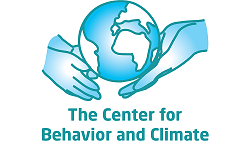Climate News - June 2020
Climate Lessons from the Pandemic
Caroly Shumway, Ph.D.
In this bleak time, it is hard to be positive. Our country has achieved the grim milestone of over 100,000 deaths from COVID-19. The loss of life to families around the country and economic hardship continue, and our thoughts are with anyone suffering. Nonetheless, four positive lessons have been learned from this pandemic that give us hope for our longer-term global challenge of climate change.
First, the virus shows how interconnected we are. While globalization of our economies has been recognized for some time, the pandemic has shown just how dependent we are globally for our food, medicines, and health. This notion of interconnectedness is also reflected in our relationship with other species (where the virus came from) and by how much we need each other for our own mental health. Climate change, too, reflects our interconnectedness: the impacts affect us all and the solutions depend upon us all. Behavior change efforts such as social learning will play a key role here in helping to scale up individual and collective action.
Second, the public has supported scientific modeling of the virus as well as the importance of science and data; this acceptance of modeling may help increase acceptance of climate modeling. In both cases, the modelers are working with complex systems with an uncertain future that is dependent upon the actions of all of us today. An early model of the coronavirus response from Imperial College, which proved to be too extreme, nonetheless led to changes in the governmental response to the virus of both the United States and United Kingdom; the U.S. now follows the models from the University of Washington’s Institute for Health Metrics and Evaluation (IHME). Public acceptance of climate models, from the Keeling curve to the IPCC’s models, are critical as we strive to use these projections to best determine policy options worldwide.
Third, our response to the virus shows the remarkable strength of our collective will. Without a vaccine and with (in most places) recommended guidelines, we have largely embraced social distancing and masks to benefit all. In the process, in many places around the world, we have flattened the curve. This gives hope that collectively, we can stem and slow the threat of climate change for the sake of our generation and for those to come. Behavioral research shows that a belief in response efficacy is critical for public actions such as voting or engaging with government officials (Doherty and Webler, 2016).
Finally, our response to the virus shows the possibility of transformative change. As a result of the decline in economic activity, in the span of just two months, human-caused CO2 emissions have dropped worldwide by 17%. Much of the decline occurred in the transportation sector, which in the U.S., contributes to over 1/3 of our carbon emissions. If even a portion of Americans who have been telecommuting from home are able to continue this practice when the economy opens up again, we will have reduced carbon emissions, improved public health, and reduced stress to boot. Just as with COVID-19, we are all in this together, and together, we can make this world a better place.
Return to Climate News Archive
